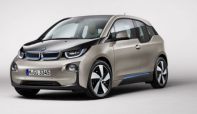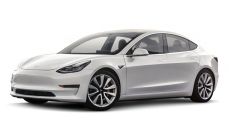


EV Link parking Schneider
mode 3 (AC) 3 to 22 kVA



Connector Type 3 infrastructure side: according to NFC 15-100 with splice protection.
The user will board a cord with a plug type 3 connected to the terminal vehicle type 1 or 2 in the case of the load in mode 3.
SMART FORTWO electric :
type 2 car side



Quickdrop : Battery Exchange Station ( Better Place project).
Hybrid Fast charge Schneider terminal
mode 3 (AC) 43 kVA
mode 4 (DC) 50 kVA
Nissan LEAF charge socket :
- CHAdeMO : Fast DC charge mode 4 (left)
- type 1 normal charge AC 230V (right)
Cable with plug type 1 (vehicle side) and type 3 side infrastructure
Charging energy of a vehicle engine is to fill his fuel tank. This duration to which users are accustomed to is of the order of few minutes at most.
One of the problems faced by designers of electric vehicles is the charging time of battery power. Indeed, a normal socket 16A can deliver around 3 kilowatts. Or a battery electric vehicle will have at least one embedded energy of 20 kWh, which corresponds to a load in 5h. This time can be optionally divided by 2 with a 32A socket, but it remains far from a few minutes to load ...
However, this method of charging a user may, however, satisfy capita urban fringe with a garage. Load may be off-peak night. Use this term to pose problems of grid stability.
The same reasoning can be applied to a user with the ability to recharge the vehicle on his workplace.
Another very important aspect of the charge on public roads, and partly in private party, is on the payment method (and thus the possibility of the user identifer) energy.
Four tracks are envisaged to ensure fast charging of electric vehicles:
- Quick charging DC 43kW (mode 4), favored by PSA, the Japanese automaker and German, with a standard IEC socket of type 2.
- Charging power with a strong grip on a semi fast AC (mode 3): EV Plug Alliance: Schneider Electric, Legrand and Scame, ensuring compliance of the Standard Type 3 "IEC, with a power load of up to 23kW, which would go down to less than an hour to fully charge. This concept is still unsatisfactory for a user wishing to refuel in minutes and is destabilizing for the network and supply electricity producttion. This solution acutellement is advocated by Renault.
The Green Paper of 26 April 2011 advocating the standard EV PLUB: socket type 3 with a load on the infrastructure side in mode 3 (box dedicated infrastructure side).
- Battery exchange in 2 minutes at a charging station type BETTER PLACE. A sufficient number of batteries will also charge those listed below when system demand is low, so a priori with low-emission energy sources. The downside: implement this heavy infrastructure, find and convince partners and impose this standard. Renault joined BETTER PLACE.
- Use of hydrogen as an energy source in a fuel cell (PAC). It is in this case replacera in the case of a fuel charge. In addition hydrogen can be decentralized production, storage and intermittent renewable energy. This technology will be available by 2020, still has not overcome all obstacles, particularly in terms of cost, manufacturing and architecture. This solution, favored in Germany, will not be adopted in France. Indeed, with a strong power generation décarbonnée and strong expertise in the field of electrical, battery recharging will remain the preferred Sotion.
In the case where a massive deployment of vehicle Electric, the current network can not support loads unoptimized. The extra energy would increase less than 1% per million of additional cars. The problem is actually in terms of power demand to the network: 1 million vehicles over 35,000 MW would call fast, while the historical peak power of 103 GW is called
in France ... The charge will necessarily be "intelligent", and will eventually dépoiement of the smart grid ... or will not pass.
The control of the load, will:
- To delay or slow down (to the extent possible) it in times of peak demand on the network. This will avoid in particular to appeal to the fossil power plants and highly polluting dégrandant the CO2 balance of VE.
- To accelerate it if the network has surplus clean energy (lots of wind for example).
Indeed, there is scope for an EV plugged example to 19h, and fully charged the next day at 7:00: the charge lasts 6h 14h on a beach ...
In a second step, the storage capacity of batteries can be harnessed to clear a peak energy demand time-limited, and thus pollute less. It is the objective BETTER PLACE / Quickdrop, but also the principle of the project Vehicle to Grid (V2Grid).
Terminals and charging modes




Charging infrastructure




Réalisations